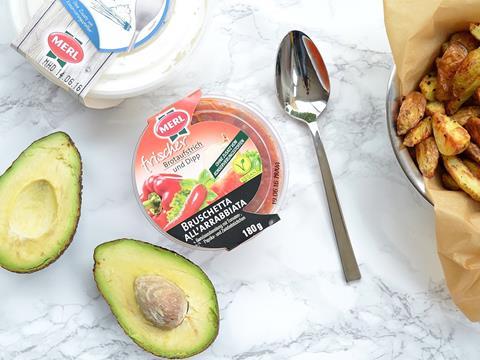
Product wall thickness is a key consideration when designing and moulding plastic products. While thicker walls offer greater strength, the downside is warping can be more prevalent when the plastic cools in the mould. To combat this and in their quest to reduce unit costs, many engineers and designers today go in the opposite direction, keeping parts as thin and lightweight as feasible.
Rigid plastics, which is the category thin walled containers sits in, is forecast to reach $226.4 billion by 2020 globally, with a growth rate of 4.4% annually for the next five years**. PE is projected to be the largest-growing segment during this forecast period. Light-weighting and consumer convenience are important factors in this expansion.
The advantages of plastic thin wall moulding are clear. A lower moulding weight means reductions in raw material and shipping costs. Meanwhile, due to faster cooling times, cycle times are much faster. This enables mass-production moulders and converters who dominate the thin walled market space significant productivity gains - so important in today's competitive plastics environment. And it's not just packaging moulders that benefit. In the automotive industry, lighter components help to reduce on-the-road weight; that means more mpg and fewer carbon emissions. While producers of electronic and telecommunication devices, as well as medical equipment manufacturers are continually pushing the boundaries for thin-walled parts.
So how thin are we talking? As a general rule, thin walled components are characterised as being less than 1mm in thickness for portable electronic parts and 2mm or less for large automotive parts, says Kevin Heap, UK packaging specialist at Sumitomo (SHI) Demag. "For food packaging containers found in retail and catering outlets, thin wall thicknesses is typically less than 0.6mm."
According to industry research compiled by AMI Consulting (2016), approximately 43% of the European thin wall packaging market is dominated by the top 10 converters*. As predicted several years ago, consolidation between thin wall moulding specialists continues throughout Europe, with SME moulders combining to strengthen their market offering.
To successfully succeed in the thin walling arena, injection moulders need to examine every potential application to ensure that the selection of materials, machine and tooling give the optimum blend of speed, quality and consistency. Providing the injection moulding machine can withstand the higher stresses and injection pressures, switching to thin wall moulding is feasible. As experts in thin-wall plastics technology, Sumitomo (SHI) Demag offers some advice to prospective users to help avert common issues.
Machinery considerations for thin walling
Hydraulic machines designed for thin-wall moulding applications frequently have accumulators driving both injection and clamping cycles. Today's all-electric and hybrid electric/hydraulic models are designed to withstand higher stresses and speeds in a 24/7 production environment. At Sumitomo (SHI) Demag, the company's hybrid El-Exis SP machine is the system of choice for many thin wall moulding specialists.
Kevin explains: "The El-Exis SP range of hybrid moulding presses is designed for high-speed thin walling production. Incorporating a number of innovative mechanical and software features, the range typically achieves between 3% and 5% more productivity than other machines on the market. When fast production speeds and frequent changes are required, machine versatility is vital. It's here that advanced system controls combine with superlative build quality to minimise maintenance requirements, changeover times and energy consumption."
Moulders must also take into account the flow of the material and how far it has to travel within the mould tool. Faster filling and higher pressures are required to drive molten plastic material into thinner cavities to prevent it freezing off between shots. This may involve making modifications to gating arrangements within the mould.
Tempting though it may be to make do with existing injection moulding plant, it can often be a false economy, cautions Kevin. "With many contracts involving millions of mouldings every year, a tailor-made system can deliver the precision and cycle time needed to achieve a rapid return on investment and sustainable growth. You should also consider longer-term plans, factoring in the likelihood of needing to integrate robotics and labelling technology into your thin wall processes.
"High-level engineering, automation, operational, communication and IT skills are equally essential.
There is great value to be gained from working with machine suppliers that have refined their skills by taking on complex and bespoke injection moulding projects and have sector expertise too," adds Kevin.
Just as important to production efficiency are operator skills and experience. Sumitomo (SHI) Demag places great emphasis on pre-installation training and familiarisation, in addition to on-going structured process optimisation courses. Catering to this demand, last year Sumitomo (SHI Demag opened a new training facility in Daventry and launched a new 'Machine & Process Appreciation' UK training programme. Offering a beginner, intermediate and advanced level programme, all customers that have embarked on this training to-date have all reported huge productivity improvements.
"Demands to create smaller, lighter parts have made thin-wall moulding one of the most sought after capabilities for an injection moulder," notes Kevin. "Although the number of moulders is shrinking, the volumes of thin walled plastics parts being produced have increased exponentially. With sustainability consumption being a key priority across the packaging, automotive and electronic supply chains, lightweight plastics offer a combination of superior functionality, strength, shatter resistance and barrier properties. These factors will continue to drive demand for thin walling in the future."
Sumitomo Demga will be exhibiting on the Sepro Robotics stand (D20) at the forthcoming Interplas Show 2017 (26-28 September, NEC, Birmingham).
















